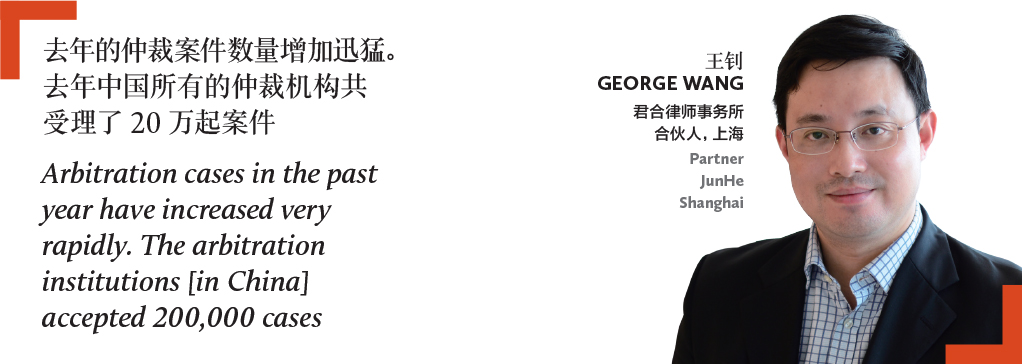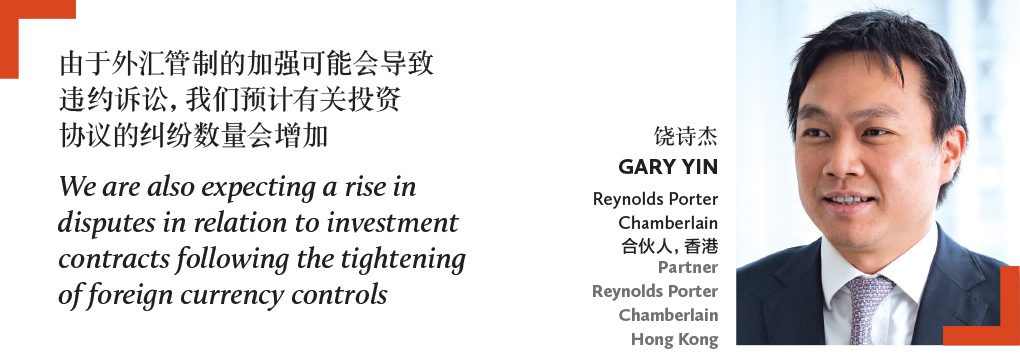ASIA’S LEADING DISPUTE RESOLUTION PRACTITIONERS SAY A UNIVERSALLY ACCEPTED ARBITRATION FRAMEWORK IS CRUCIAL TO THE SUCCESS OF THE BELT AND ROAD.
VANESSA IP REPORTS
It isn’t a bad time to be a commercial disputes practitioner in Asia. Although economic growth has slowed, the amount of dispute resolution work emanating from China is rapidly on the rise. China has been ramping up its global investment efforts, with initiatives such as Belt and Road (also known as One Belt, One Road, or OBOR).
“The sheer scale of the trade and investment opportunities that the initiative generates, and thus the possibility of more and larger-scale disputes, means there is bound to be a significant increase in demand for dispute resolution services,” says Gary Yin, a partner at Reynolds Porter Chamberlain (RPC) in Hong Kong.
According to Ronald Sum, a partner at Troutman Sanders in Hong Kong, the increase in the number of Chinese companies investing in overseas jurisdictions has also led to a significant increase in commercial and investment-type disputes with overseas entities, particularly by way of arbitration.
“Infrastructure dispute between Chinese entities and overseas entities have always been among the most arbitrated sector within the region,” he says. “More recently, the most common type of cases in China is trademark infringement and patent infringement cases.”
Wang Wenying, the secretary general of China International Economic and Trade Arbitration Centre’s (CIETAC) Hong Kong Arbitration Centre, says in the current climate, “there is a heightened need for practicable solutions to disputes in such a vastly extended market that marks a variety of languages, business practices and legal systems”.
“The more cross-border transactions there are, the greater the necessity for a workable system of international dispute resolution,” she adds.
Chen Fuyong, deputy secretary-general of the Beijing Arbitration Commission/Beijing International Arbitration Centre (BAC/BIAC), agrees and hopes that arbitration will one day become the “common language” used to resolve international disputes; but there is still a long way to go.
NATURE OF DISPUTES
John Choong, a partner at Freshfields Bruckhaus Deringer in Hong Kong, says the firm is continuing to see an increase in the volume of China-related cross-border disputes. “This is the result of both the increase in outbound investments by Chinese companies in recent years, and also due to uncertainties in some sectors in China’s economy.”
Helen Tang, a senior associate at Herbert Smith Freehills in Shanghai, says the central government recently issued more rules aimed at transforming its foreign investment regime, which will further open the Chinese market to foreign investors and simplify government approval procedures for foreign investment. “As a result, foreign investors are considering investment opportunities in newly opened industries, in particular in mining and manufacturing, as well as certain service industries,” she says. “An uptick in investment and financing in these sectors will inevitably lead to more associated disputes.”
Another recent development, according to Tang, is the Supreme People’s Procuratorate’s circular instructing prosecutors to target web-borne financial fraud, particularly pyramid schemes. “This forms part of the government’s clampdown on China’s banking industry to root out crimes involving securities and futures, particularly breach of duty crimes against investors,” she says.
George Wang, a partner at JunHe in Shanghai, estimates that in the past year, courts in the PRC accepted more than 23 million cases. Of these, he says the majority were commercial cases involving investment disputes. Other common disputes involved securities, finance and banking, insurance and bankruptcy. “Last year, CIETAC accepted 2,181 cases,” he says. “Most cases were focused on general commodity trading disputes, followed by electronic and machine equipment cases, then service contract cases. Arbitration cases in the past year have increased very rapidly. The arbitration institutions [in China] accepted 200,000 cases. That’s an increase ratio of 52%.”

“With the increase in awareness of shareholder rights and need for protection, it is likely that our market will continue to see a rise in shareholder disputes, derivate actions and unfair prejudice claims involving public companies. We are also expecting a rise in disputes in relation to investment contracts following the tightening of foreign currency controls, which may lead to breach of contract claims.”
THE BELT AND ROAD
Dispute resolution practitioners and advocates all agree that the Belt and Road initiative, which aims to connect Asia, Europe and Africa, will have an immense impact on commercial arbitration. “The Belt and Road initiative will encourage the development of China-related commercial arbitration and investment treaty arbitration in Asia, and even across the world,” says Gao Fei, a senior adviser at Boss & Young in Shanghai and the former secretary general of CIETAC’s Shanghai sub-commission.
“The initiative will bring a large number of investment and infrastructure projects to countries and regions along the routes, all of which will inevitably have the potential to cause disputes,” Gao says. “At least part of these cross-border commercial or investment disputes will need to be settled by arbitration, whether it is administered by arbitral institutions in China or in other jurisdictions where the investment or the infrastructure project is located.”
You can register for free register for free register for free register for free to enjoy selected content, including this article, or subscribe subscribe subscribe subscribe to unlock all content.
If you are already a registered user or subscriber, login here.
你可以免费注册去浏览这篇文章,你也可以订阅订阅去解锁所有内容。
如果你已经是我们的注册用户或者订阅会员,请在此登录:
The agreement on ‘all disputes in connection with the contract’
Strategies for patentee lawsuits against design invalidations























